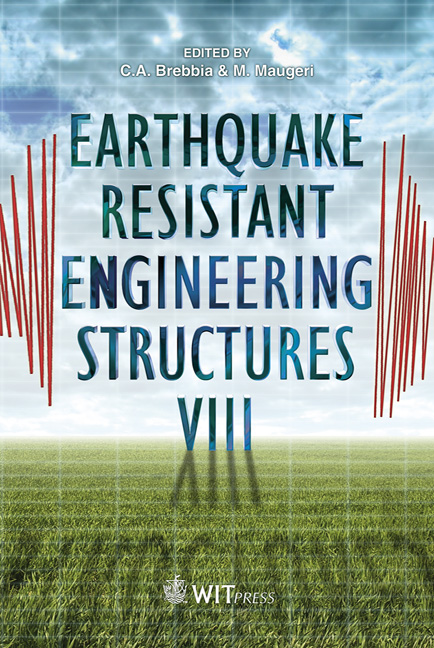Behaviour Of Steel Reinforced Concrete Beam-column Joints
Price
Free (open access)
Transaction
Volume
120
Pages
10
Page Range
89 - 98
Published
2011
Size
1,728 kb
Paper DOI
10.2495/ERES110081
Copyright
WIT Press
Author(s)
I. Montava, A. Gonzalez, R. Irles & J. C. Pomares
Abstract
A composite structure with steel reinforced concrete, SRC, has the strength of reinforced concrete and the ductility of steel, meaning that appropriate design can achieve high seismic resistance capacity. The present investigation shows the results and conclusions obtained from analyzing the strength and ductility of three different joints of a structural frame tested with increasing loading and unloading cycles, one with Reinforced Concrete, RC, another with Steel reinforced concrete, SRC, and a third with only reinforced concrete with the same strength capacity as the SRC section. We are able to give hyperstatic and isostatic structures sufficient failure warning capacity, significant ability to dissipate energy and adequate protection against fire. Keywords: reinforced concrete structures, steel reinforced concrete, ductility, structures, SRC, HAA, joint, earthquake resistant structure, steel. 1 Introduction In recent decades there have been numerous studies aimed at determining the seismic behaviour of reinforced concrete structures, metal structures and composite structures. Composite structures achieve similar rigidity to concrete structures and similar ductility to steel structures, [1], with metal sections being necessary to protect against fire. Reinforced concrete structures with completely embedded profiles significantly increase energy dissipation with adequate fire protection [2]
Keywords
reinforced concrete structures, steel reinforced concrete, ductility, structures, SRC, HAA, joint, earthquake resistant structure, steel





